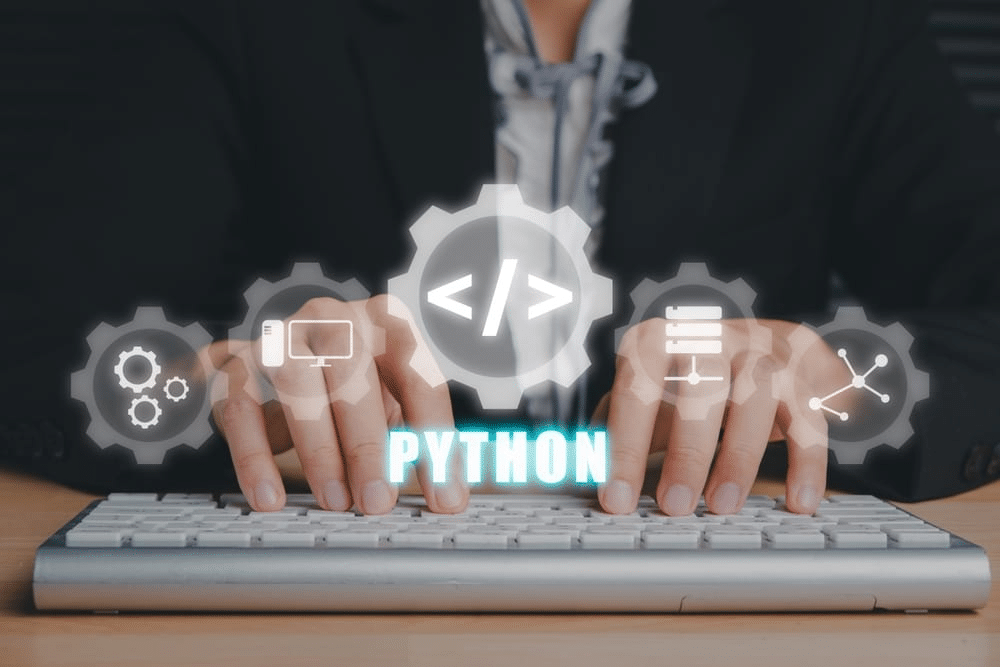
With the rapid advancement of technology, financial trading can now leverage programming languages to help us execute investment strategies and analyze market trends more efficiently. This article will introduce algorithmic trading with Python, the benefits of using the Python programming language for financial trading, and how to apply it to financial transactions, allowing investors to harness the power of technology to build their ideal investment portfolios.
Table of Contents
Python is a simple and easy-to-learn programming language characterized by its ability to use a rich set of libraries to encapsulate complex functions. This allows users to accomplish more tasks with simple commands and less code without writing everything from scratch. As a result, Python is widely used in data analysis, machine learning, and web scraping. Particularly in the financial market, investors can use Python for algorithmic trading, quickly analyze market data, customize conditions to create their ideal investment portfolios, and automatically place orders when those conditions are met.
Python for algorithmic trading is like having a personal digital financial advisor. It can quickly process historical data and perform market analysis, filter out effective indicators from vast amounts of trading data, and assist in formulating trading strategies to seize the best opportunities for achieving reasonable returns. Additionally, it can adjust trading strategies to maximize capital efficiency, even with limited funds. Below, we’ll explain the five key benefits to help you understand why learning Python for algorithmic trading is essential.
Python components can be downloaded for free, and most environments for running and writing Python code are also accessible. Some compilers can even be used online without downloading anything, significantly reducing the learning cost. Additionally, Python’s syntax is intuitive and easy to understand, with syntax similar to basic English grammar. Even beginners who have never encountered programming languages can quickly get started.
Python’s built-in libraries can handle many basic operations, such as file reading and matrix plotting. In addition, over 130,000 standard libraries are available for tasks such as machine learning, data visualization, data analysis, and web scraping. These libraries help us visualize complex data, download historical data for backtesting, connect to market quotes, and automate order placement. Commonly used libraries include the Pandas and Numpy data analysis packages and machine learning frameworks like PyTorch and TensorFlow. Combining the necessary functions allows you to create a customized algorithmic trading system that saves time on market monitoring and order execution.
If the current algorithmic trading software doesn’t meet your needs, Python allows you to combine thousands of packages to customize various trading indicators and strategies. You can also optimize or remove unnecessary functions at any time. Virtually any financial product you can imagine can be traded using Python. Other common algorithmic trading platforms, such as TradingView and MultiCharts, may offer beginners more straightforward and user-friendly interfaces. However, they come with certain limitations in terms of functionality and budget. In the long run, Python provides greater flexibility in expanding functionality and applies to broader areas.
Python has been used in algorithmic trading for many years and is quite prevalent in the financial market. As a result, there is a wealth of diverse and rich online learning resources, including articles in both English and Chinese, video courses, and discussion groups. Whether you are a beginner or looking to advance your skills, you can find relevant resources to study and learn, significantly reducing the cost of learning.
Python is a general-purpose programming language, and many applications and online platforms are built using Python. Its syntax is clean and easy to understand, allowing you to handle large amounts of data with just a few lines of code, saving development time and maintenance costs. Its powerful functionality makes it ideal for a variety of tasks. In an era where artificial intelligence is on the rise, Python offers more possibilities than other programming languages.